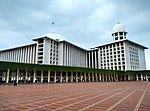Related Research Articles

West Sumatra is a province of Indonesia. It is on the west coast of the island of Sumatra and includes the Mentawai Islands off that coast. West Sumatra borders the Indian Ocean to the west, as well as the provinces of North Sumatra to the north, Riau to the northeast, Jambi to the southeast, and Bengkulu to the south. The province has an area of 42,119.54 km2 (16,262.45 sq mi),or about the same size as Switzerland,with a population of 5,534,472 at the 2020 census. The official estimate at mid 2022 was 5,640,629. The province is subdivided into twelve regencies and seven cities. It has relatively more cities than other provinces outside Java, although several of them are relatively low in population compared with cities elsewhere in Indonesia. Padang is the province's capital and largest city.

Pagaruyung, also known as Pagarruyung, Pagar Ruyung and Malayapura or Malayupura, was a kingdom that once stood in the island of Sumatra and the seat of the Minangkabau kings of Western Sumatra. Modern Pagaruyung is a village in Tanjung Emas subdistrict, Tanah Datar regency, located near the town of Batusangkar, Indonesia.
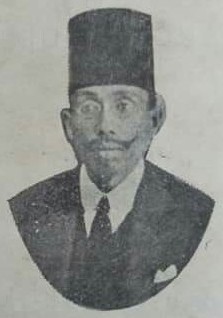
Abdul Karim Amrullah, known as Haji Rasul, was a Muslim reformer who led reformation of Islam in Sumatra, Dutch East Indies.

A surau is an Islamic assembly building in some regions of Sumatra and the Malay Peninsula used for worship and religious instruction. Generally smaller physical structures, its ritual functions are similar to those of a mosque, allow men and women, and are used more for religious instruction and festive prayers. They depend more on grassroots support and funding. They can be compared to the Arab zawiya. In Minangkabau society, they continued pre-Islamic traditions of a men's house, and are built on high posts.

Indang or Endang, also called Dindin badindin, is a traditional Minangkabau Islamic dance originating from West Sumatra, Indonesia. Indang dance grows and develops in the Minangkabau community as a portrayal of the arrival of Islam in West Sumatra in the 13th century.

Singkil people are an ethnic group of people found in Aceh Singkil Regency and Subulussalam, Aceh province, Indonesia.

Mahmud Yunus was an Indonesian Minangkabau Islamic preacher and teacher. He authored over seventy-five books, including Tafsir Qur'an Karim and an Arab-Indonesian dictionary. His books are used in madarsas and pesantrens. During his employment in the Indonesian Department of Religion, he promoted the incorporation of religious lessons into the national education curriculum. Yunus received an Honorary Doctorate in "tarbiyah" from IAIN Syarif Hidayatullah, Jakarta. A road to IAIN Imam Bonjol, Padang is named after him.
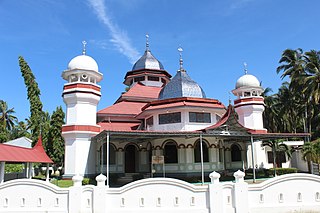
The Syekh Burhanuddin Grand Mosque is one of the oldest mosques as well as a cultural heritage in West Sumatra, Indonesia. The mosque is located in Nagari Ulakan, Ulakan Tapakis sub-district, Padang Pariaman district of West Sumatra.
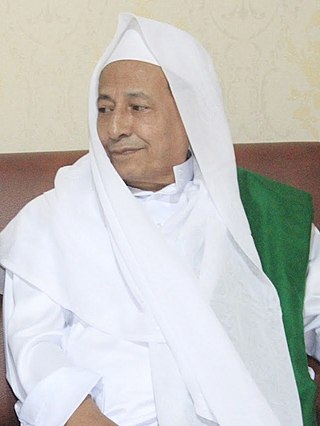
Maulana Al-Habib Muhammad Luthfi bin Ali bin Yahya, colloquially known as Habib Luthfi, is an Arab Indonesian Islamic sheikh, kyai and preacher from Pekalongan, Central Java, who has served as a member of the Indonesian Presidential Advisory Council since December 2019.

Islam is the most common religion in the Indonesian province of West Sumatra, embraced by 97.42% of the population. The Muslim population increases to 99.6% if it excludes the Mentawai Islands, where the majority of the non-Muslim (Protestant) West Sumatrans reside. Islam in West Sumatra is predominantly Sunni, though there is a small Shia Islamic pocket within the coastal city of Pariaman. The Minangkabau people, indigenous to West Sumatra, comprise 88% of the West Sumatran population today and have historically played an important role within Indonesia's Muslim community. Up until today, the region is considered one of the strongholds of Islam in Indonesia.
Tuanku Nan Tuo (1723–1830) or Tuan Ku Nan Tua was one of the leading Minangkabau ulamas. He was known as a wasatiyyah (moderate) cleric, who took syncretic approaches in the religious outlook, and was a Sufi and aspired for reformation and purification of Islam in the Agam region of West Sumatra at the same time. He also played a crucial role in the birth of Minangkabau Islamic reformers known as padri. Tuo however, disagreed with the more radically puritanical views espoused by padris including Tuanku Nan Renceh and Tuanku Imam Bonjol.

Muhammad Jamil Jambek, or better known as Sheikh Muhammad Jambek, was one of the pioneers of Islamic modernist reformers in Indonesia, hailed from Bukittinggi, Minangkabau region in the late 19th century. He was also known as an astronomer. His works criticized the perceived deviation from the Islamic orthodoxy widespread in Minangkabau society, and inspired the subsequent expansion of Islamic modernist movements in West Sumatra.
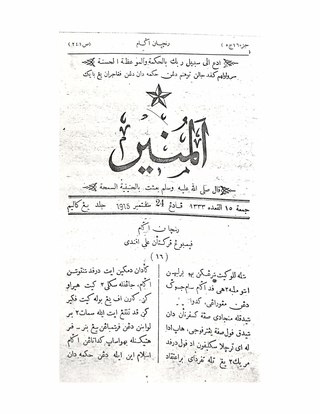
Al-Munir was an Islamic magazine, written in Arabic-Malay, published in Padang from 1911 until 1915. Inaugurated by the initiative of Abdullah Ahmad in early April 1911, Al-Munir was listed as the first Islamic mass media in Indonesia. The magazine was often associated with Al-Imam magazine published under the direction of Sheikh Tahir Jalaluddin in Singapore during 1906-1909. In addition to Abdullah Ahmad, several religious figures such as Abdul Karim Amrullah, Muhammad Thaib Umar and Sutan Muhammad Salim were recorded in the ranks of the editorial board.
Ismail al-Khalidi al-Minangkabawi was an Islamic scholar who belonged to the Khalidiyya branch of the Naqshbandi tariqa in the 18th to 19th century. He hailed from today's Tanah Datar Regency, West Sumatra. He is regarded as the pioneer of the tariqa in Minangkabau region, as well as the whole Indonesian archipelago. He was also known as a scholar of Islamic jurisprudence, kalam theology and tasawwuf.
Sumatera Thawalib was one of the earliest Islamic mass organizations in Indonesia, based in West Sumatra. Sumatera Thawalib represented the modernist school of Islam in Indonesia, an Islamic reform with heavy emphasis on the Qur'an, hadith, a modern scientific education, and abolishing of non-orthodoxy. Islamic Modernism was promoted by Muhammad Abduh. The term Sumatera Thawalib literally means "Students of Sumatra", and it was founded on January 15, 1919 as a result of meeting between the Muslim students of Padang Panjang, Parabek and Padang Japang. The aim of the organization was deepening of Islamic knowledge among the Muslim students. The organization had contributed substantially to the development of Islam in West Sumatra in the early 20th century.

Abdullah Ahmad was an Islamic cleric (ulama) and reformist hailed from Padang Panjang, West Sumatra. He is a founder of Islamic mass organization based in West Sumatra, Sumatera Thawalib. He also founded the Islamic magazine Al-Munir, the first Islamic mass media in the Indonesian archipelago. Together with Abdul Karim Amrullah, he became one of the first Indonesians who received the honorable degree from Al-Azhar University in Cairo.

Abd al-Rauf ibn Ali al-Fansuri al-Sinkili was a well-known Islamic scholar, spiritual leader of the Shattariyya tariqa and the mufti of Aceh Sultanate. He was the confidant of Sultana Safiyat al-Din. He was considered the first person to spread the Shattari Sufi order in Indonesia and Southeast Asia. Many of his students also became disseminators of Islam. He is commonly known as Shaikh Abd al-Rauf al-Sinkili, and also known posthumously in Aceh as Teungku Syiah Kuala, which translates to "Sheikh in the Estuary".

Union of Islamic Education, also known as PERTI, is a Shafii-Ash'ari Islamic organization in Indonesia. The organization was founded by Sulaiman ar-Rasuli on May 5, 1928 in Candung, West Sumatra. In its development, PERTI had become a political party and gained four People's Representative Council (DPR-RI) seats and seven Constituent seats in 1955 general election.

Minangkabau culture is the culture of the Minangkabau ethnic group in Indonesia, part of the Indonesian culture. This culture is one of the two major cultures in the Indonesian archipelago which is very prominent and influential.

Sheikh Sulaiman ar-Rasuli, known as Inyiak Canduang, was an Indonesian ʿālim and founder of Union of Islamic Education, a kaum tua (traditionalist) Islamic organization from West Sumatra. He was credited for popularizing the famous Minangkabau idiom, adat basandi syarak, syarak basandi Kitabullah.
References
- 1 2 3 4 5 6 7 8 9 10 11 12 H.M. Bibit Suprapto (2009). Ensiklopedi Ulama Nusantara. Gelegar Media Indonesia. ISBN 979-980-6611-14-5. pp.286-289.
- 1 2 Burhanuddin Ulakan, Kematian 1704 Archived 2016-03-10 at the Wayback Machine . Relasi Data. Retrieved 29 April 2014.
- 1 2 3 4 5 6 7 8 Samsul Munir Amin (2008). Karomah Para Kiai. PT LKiS Pelangi Aksara. ISBN 978-979-8452-49-9. pp.304-307.
- 1 2 "Chaerul Umam: Islam Dalam Karya Visual Masih Minim", Kompas , 1 April 2004.
- ↑ Penelitian Rumah Ibadah Bersejarah: Surau Gadang Syekh Burhanuddin Ulakan Padang Pariaman Sumate. Kemenag. Retrieved 29 April 2014.
- ↑ Gus Dur “Basapa” di Makam Syeikh Burhanuddin Ulakan. NU. Retrieved 29 April 2014.
